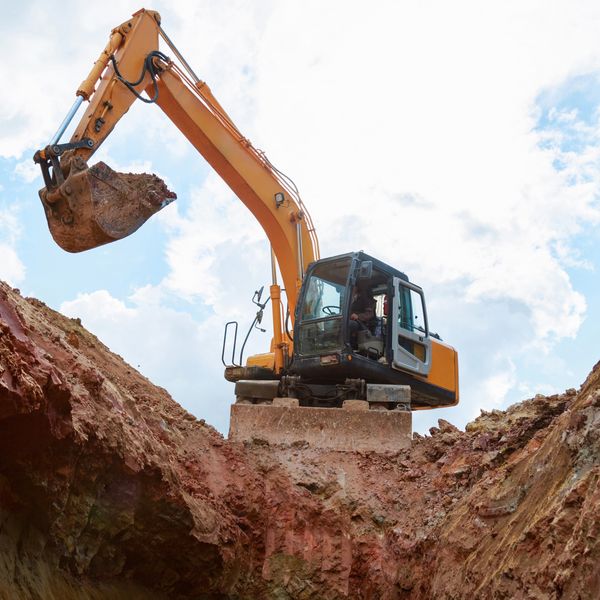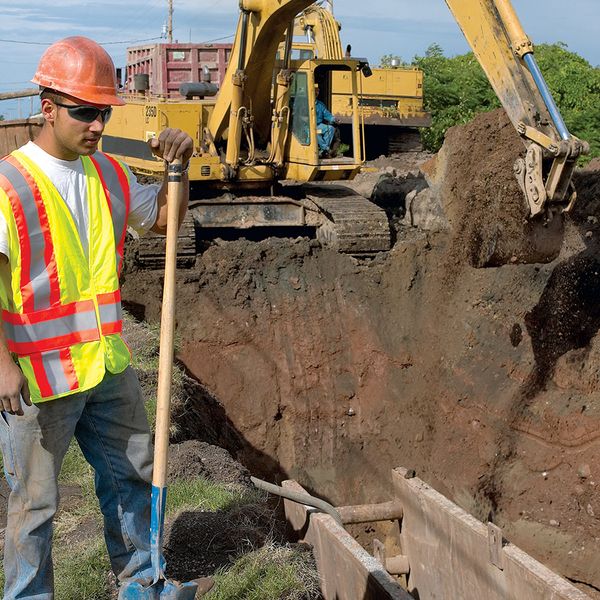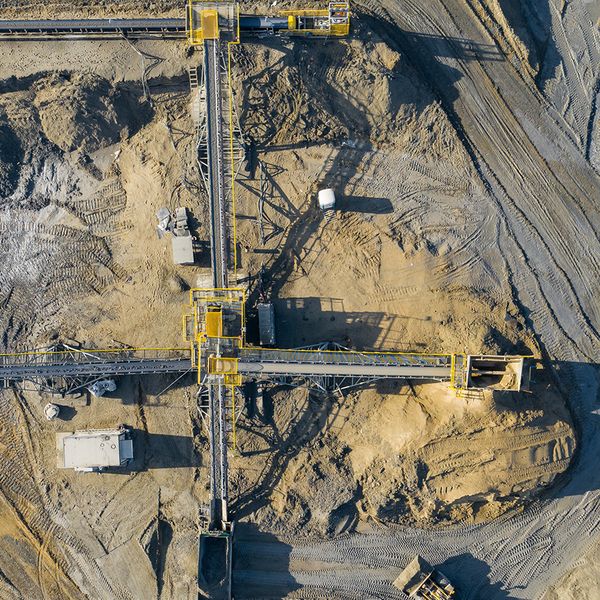Avoid placing loads on the leading edges of your excavations
Spoil piles, equipment, and materials placed too close to the leading edge of an excavation could increase the chances for a collapse. Having a competent person assess your excavation for these hazards can reduce the likelihood of an incident occurring:
- Surcharge loads,
- Equipment vibration,
- Adverse weather conditions, and
- Groundwater.
These four hazards can change the condition and classification of soils. A competent person must consider all these hazards when determining if the excavation is safe to enter and how far to place loads away from the leading edge.
Surcharge Loads
Surcharge loads place downward pressures on the surrounding soil. Understanding how load placement can affect soil stability can help your workers prevent a collapse. OSHA 1926.651, Specific Excavation Requirements, requires that materials and equipment are not placed within two feet of an excavation’s leading edge. Many workers incorrectly apply this rule for cave-in prevention. But it’s for preventing things from rolling or falling into the excavation, not for cave-in protection.
Surcharge loads, like spoil piles placed two feet away from the leading edge of an excavation, place downward loads onto the soil. This force puts increasing pressure on the vertical walls of an excavation or trench. As more dirt is added to the pile, the pressure to the sidewalls increases, which eventually can result in a cave-in. Two feet may not be adequate to prevent a cave-in. As more load is placed near the edge from materials, workers, or equipment, the chances for a collapse increase.
Equipment Vibration
The soil surrounding an excavation has the greatest load-bearing capacity when it’s densely packed. You’ll often see workers compacting the soil under roadways, around excavations, or underneath building foundations so that voids can be filled in. If these voids aren’t filled in properly, and the soil is loose and granular, the ground can shift and settle unevenly.
When equipment is operating near the leading edge of an excavation, vibrations in the soil can cause it to lose its density as it separates. Other conditions, such as adverse weather conditions and groundwater, can increase the effects of soil separation, leading to the failure of an excavation’s sidewall. A competent person on your jobsite needs to determine how far back from the edge materials, spoil piles, and equipment needs to be placed to prevent a collapse. Don’t assume that two feet away will always be adequate.
Equipment vibrations have varying effects on different types of soil classifications. Class A soil is cohesive and doesn’t crumble. So, it may have little to no impact from vibrations. Class B soil has little or no clay content, and dry soil may crumble easily under vibration. Class C soil is coarse and has the least resistance to vibrations. Your jobsite competent person should be knowledgeable in soil assessment and classification. If not, consider consulting with a registered geotechnical engineer.
Adverse Weather Conditions
Soil conditions can be affected by adverse weather conditions such as wind, temperature, snow, rain, and hail. Surface water from rain and melting snow can saturate the soil, causing a reduction in its load-bearing strength. The temperature on a jobsite can vary from the early morning hours to late in the afternoon. Throughout the day, the temperature difference, especially during the winter months, can create a freezing and thawing cycle, causing the ground to heave.
Wind, sunshine, hail, and other weather conditions can affect soil cohesiveness and increase cave-in risks to an excavation. Check the weather frequently and plan excavation work accordingly to prevent increase exposure to collapse. Weather conditions should be a regular safety topic during your daily planning and safety meetings.
Groundwater
Groundwater is managed with dewatering pumps. A laborer dewaters all excavations before the start of the work shift in the morning. Groundwater can engulf an excavation and cause the sidewalls to become saturated with water. As the excavation is dewatered, the sidewalls can sluff down and cave-in from the soil’s increased weight. As the soil dries, it can become brittle.
Groundwater management should be a proactive activity, not reactive, to prevent the sidewalls from becoming too saturated. Install pumps to automatically remove water from the excavation when it reaches a certain level. Loads should be placed an adequate distance away from the leading edge if the groundwater can rise unexpectedly between shifts or when nobody is onsite.


















































